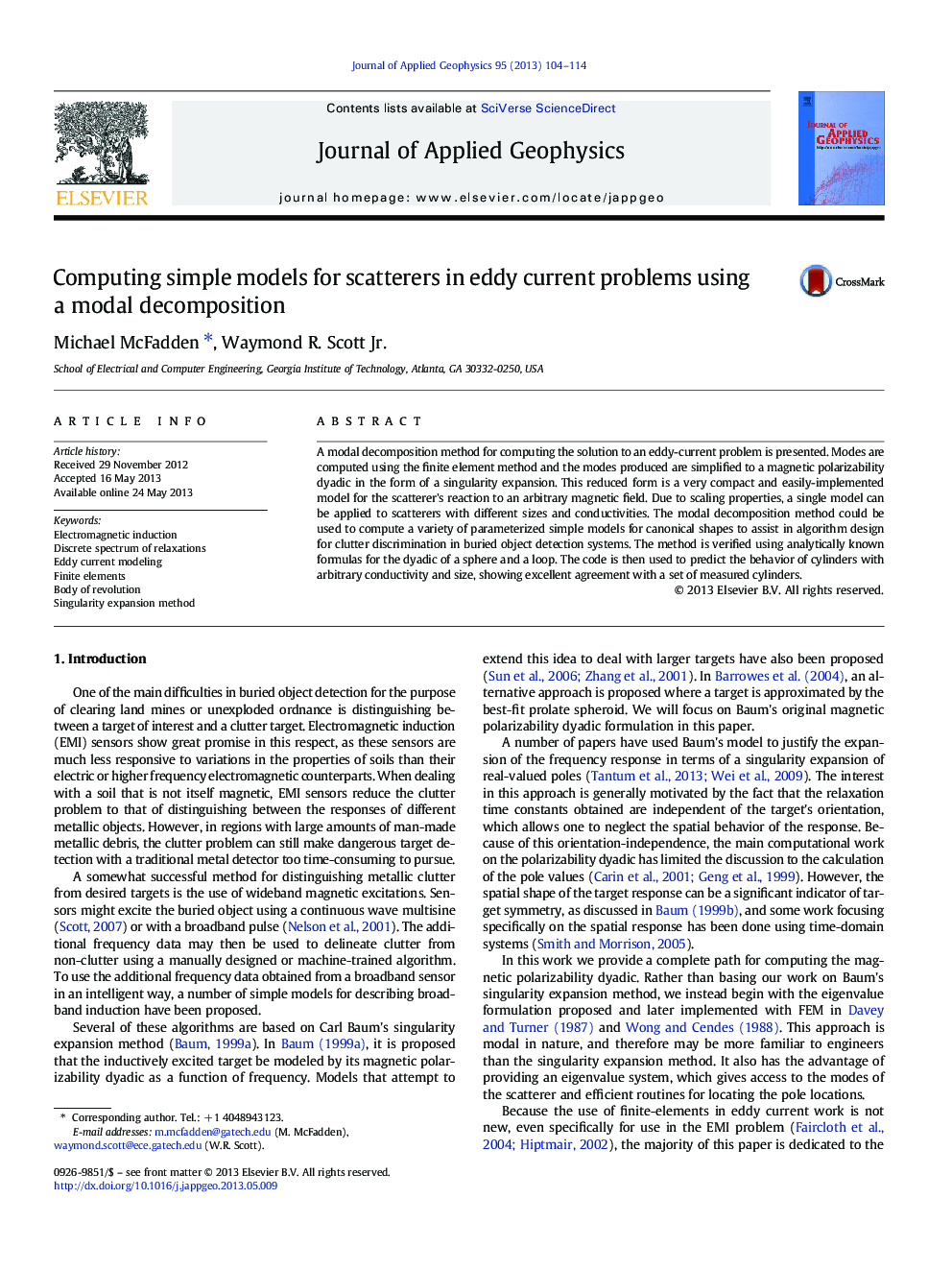| Article ID | Journal | Published Year | Pages | File Type |
|---|---|---|---|---|
| 6447353 | Journal of Applied Geophysics | 2013 | 11 Pages |
Abstract
A modal decomposition method for computing the solution to an eddy-current problem is presented. Modes are computed using the finite element method and the modes produced are simplified to a magnetic polarizability dyadic in the form of a singularity expansion. This reduced form is a very compact and easily-implemented model for the scatterer's reaction to an arbitrary magnetic field. Due to scaling properties, a single model can be applied to scatterers with different sizes and conductivities. The modal decomposition method could be used to compute a variety of parameterized simple models for canonical shapes to assist in algorithm design for clutter discrimination in buried object detection systems. The method is verified using analytically known formulas for the dyadic of a sphere and a loop. The code is then used to predict the behavior of cylinders with arbitrary conductivity and size, showing excellent agreement with a set of measured cylinders.
Related Topics
Physical Sciences and Engineering
Earth and Planetary Sciences
Geophysics
Authors
Michael McFadden, Waymond R. Jr.,
